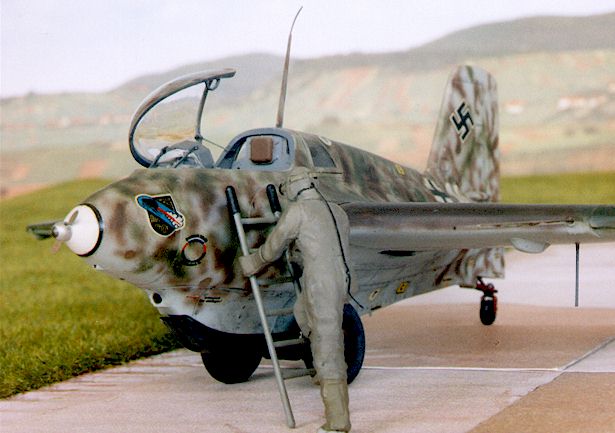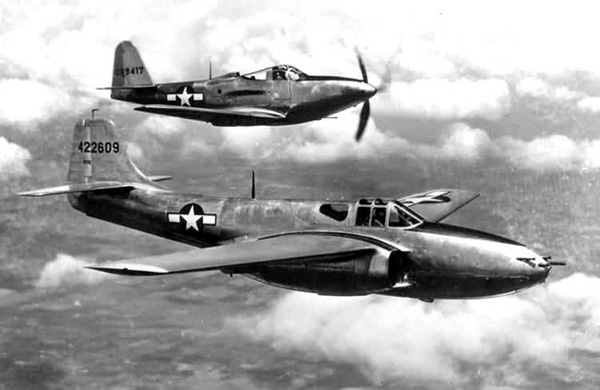Revere blogs about a couple of recent articles that suggest new procedures for cardio-pulmonary resuscitation: if a person has collapsed with circulation failure (because they have had a heart attack, been electrocuted or drowned) it seems more important for survival to keep up circulation than inflating the lungs. So, if you are alone, don't bother with mouth-to-mouth, just keep compressing that chest.
If you don't know how to perform chest compression, get in contact with your nearest Red Cross centre, they regularly give courses in first aid. (CPR is visible and dramatic, but I think the most important thing taught in these courses is the habit to go up to people lying on the ground and check on them instead of just stepping over them.)
2007-12-31
2007-12-30
Outnerded!
Kibitzing with the Only-begotten Daughter:
“Hold these papers for me while I put on my hat.”
“OK. Hey, hey, I didn't say yes to mittens as well!”
“I am altering the deal, pray I don't alter it again!”
“It's actually ‘alter it any further’”
“D'oh!”
“Hold these papers for me while I put on my hat.”
“OK. Hey, hey, I didn't say yes to mittens as well!”
“I am altering the deal, pray I don't alter it again!”
“It's actually ‘alter it any further’”
“D'oh!”
2007-12-29
Tindra med ögonen, ungjävel!

The window dressing at Åhléns has been rather uninspired this Christmas and I fully understand the pain of having to look like a Christmas tree all through December…
2007-12-26
Veckans ord: vårtrött
 Det förefaller åter ha blivit modernt att bättra på rosigheten på sina liljekullar, alltså står kosmetikfabrikanterna beredda och tillverkar vårtrött åt damerna.
Det förefaller åter ha blivit modernt att bättra på rosigheten på sina liljekullar, alltså står kosmetikfabrikanterna beredda och tillverkar vårtrött åt damerna.
2007-12-24
2007-12-23
Lunch conversation
The family was disposing of some Gnocchi al salmone and reading various things, as is its wont. I found Jens Littorin's article on Stilton cheese in today's Dagens Nyheter:
“There are six official criteria on a real Stilton, and one of them is that it has to taste like a Stilton. But, if it is a Stilton, doesn't it by definition taste like a Stilton?”
“Well, adher to a previously defined Stilton taste.”
“Hmm, so there'd be an official Reference Stilton in Nottingham Castle? But how do you make sure its taste doesn't change? Even the International Prototype Kilogramme has lost weight.”
“It'd be difficult to make a Stilton standard based on constants of nature.”
“Indeed.”
“There are six official criteria on a real Stilton, and one of them is that it has to taste like a Stilton. But, if it is a Stilton, doesn't it by definition taste like a Stilton?”
“Well, adher to a previously defined Stilton taste.”
“Hmm, so there'd be an official Reference Stilton in Nottingham Castle? But how do you make sure its taste doesn't change? Even the International Prototype Kilogramme has lost weight.”
“It'd be difficult to make a Stilton standard based on constants of nature.”
“Indeed.”
2007-12-21
Veckans ord: verklighetstorget
Postmodernismen som filosofisk idé skulle kunna tänkas utgå från den tämligen rimliga observationen att verkligheten är så pass komplex att varje given beskrivning av den inte täcker viktiga delar; olika i sig ”korrekta” verklighetsbeskrivningar kan till och med vara motstridiga i delar som blivit förenklade på olika sätt. Olika beskrivningar är bra till olika syften.
Att därifrån komma till att man inte bara kan välja mellan ett antal beskrivningar inom givna restriktioner, utan att man fritt kan välja en verklighetsbeskrivning vilken som helst kräver en i mitt tycke fullständig losskoppling mellan den verklighet man lever i (där saker faktiskt händer, vare sig man anser dem politiskt korrekta eller inte) och den man väljer att beskriva i sina artiklar och böcker.
Man talar ofta om en ”åsikternas marknad” där man kan välja bland olika idéer. Det är nog gott och väl för politik där våra kunskaper om verkligheten är så pass ofullständiga att även väldigt olika (men inte hur olika som helst!) beskrivningar inte nödvändigtvis kan visas vara falska.
Men jag vill inte riktigt acceptera idén om verklighetstorget, där man kan strosa runt och välja sin egen verklighet efter vad som verkar behagligast. Verkligheten synes vara en och oböjlig, även när våra beskrivningar är ofullständiga.
Att därifrån komma till att man inte bara kan välja mellan ett antal beskrivningar inom givna restriktioner, utan att man fritt kan välja en verklighetsbeskrivning vilken som helst kräver en i mitt tycke fullständig losskoppling mellan den verklighet man lever i (där saker faktiskt händer, vare sig man anser dem politiskt korrekta eller inte) och den man väljer att beskriva i sina artiklar och böcker.
Man talar ofta om en ”åsikternas marknad” där man kan välja bland olika idéer. Det är nog gott och väl för politik där våra kunskaper om verkligheten är så pass ofullständiga att även väldigt olika (men inte hur olika som helst!) beskrivningar inte nödvändigtvis kan visas vara falska.
Men jag vill inte riktigt acceptera idén om verklighetstorget, där man kan strosa runt och välja sin egen verklighet efter vad som verkar behagligast. Verkligheten synes vara en och oböjlig, även när våra beskrivningar är ofullständiga.
2007-12-19
More statistics
With the addition of a Barry Manilow Christmas record, my iTunes collection is now one solid week of music.
2007-12-17
In the top 6%
2007-12-16
Headshake…
2007-12-14
2007-12-12
2007-12-10
Smells
There are things and places that have special smells, but I find it difficult to identify the components of smells and have no names for most of them, but some important things with characteristic smells are:
Airfix catalogues
Märklin catalogues
hospital wards
dental surgeries
public pools
Finland ferries
airport aprons
unheated porches in Ostrobothnian winter
Sunlight soap
Airfix catalogues
Märklin catalogues
hospital wards
dental surgeries
public pools
Finland ferries
airport aprons
unheated porches in Ostrobothnian winter
Sunlight soap
2007-12-08
Another bridge
Paul Simon often reworks his music quite considerably. I was unaware of this early version of “Bridge Over Troubled Water” with different lyrics.
2007-12-07
Veckans ord: ingengör
Jag är både tekniskt och vetenskapligt högutbildad men alltför många dagar funkar ingenting och jag får inget klart och då känner jag mig som en enkel ingengör.
2007-12-06
Satumaa
Unto Mononen's tango ”Satumaa” is sometimes referred to as the second national anthem of Finland. So in honour of the 90th anniversary of Finnish independence, here is Reijo Taipale's classic version.
(Apologies for the sound quality.)
(Apologies for the sound quality.)
2007-12-03
By popular request
 Earlier this summer, the well-preserved remains of what is believed to be Lockheed P-38F Lightning serial number 42-7677 were found on a beach in Wales by Cardigan Bay, where they had been covered and protected by sand since the plane was abandoned there after a forced landing in 1942. The International Group for Historic Aircraft Recovery is on the case and has already named the aircraft “The Maid of Harlech” after nearby Harlech Castle.
Earlier this summer, the well-preserved remains of what is believed to be Lockheed P-38F Lightning serial number 42-7677 were found on a beach in Wales by Cardigan Bay, where they had been covered and protected by sand since the plane was abandoned there after a forced landing in 1942. The International Group for Historic Aircraft Recovery is on the case and has already named the aircraft “The Maid of Harlech” after nearby Harlech Castle.This has caused considerable excitement as surviving P-38s in any shape are relatively few and there are even fewer individuals of the P-38F, in fact the other P-38Fs are “Frankenstein aircraft”, composed of parts from multiple individuals. Accordingly the plane will be excavated in the coming spring and after preservation placed in some suitable museum.
A good popular overview of the Lightning is Martin Caidin's Fork-Tailed Devil: The P-38, with the caveat that Caidin is aviation history's answer to Herman Lindqvist—a good story is always more important than uncertain and tentative history…
A Swedish literary connection is Bertil Cleve's Fantomen – Pojkarnas Flygbok 1940, in which two Swedish volunteers participate in the Finnish Winter War with a privately procured Lightning with a tail-gunner! In the spirit of the times the Swedes are handsome, upright and brave, the Finns are taciturn, tough and enormously brave, whereas the Russians are subhuman cowards. Sometimes I pretend people no longer think like that.
Thanks to Dr Whom for grammar control.
2007-12-02
Myopic review
A non-aviation-interested friend was very amused by a review I wrote on The Aviator without ever touching on the human actors. I'll do that trick again…
Christopher Priest's book The Separation [Priest, 2002] is an alternate history with multiple layers. Alternate histories typically build on the premise that one single, but important, thing has been changed relative to “our” universe and the author then attempts to draw out the consequences of that. But, as noted by Christie [1944], everything that happens is the consequence of lots of other things that happened before that so rarely can you just posit that a single thing changed, but other things will have changed as well.
In this review I will, in the spirit of Carter [1985], pick up a throwaway line from the book and speculate over what other changes in the alternate universe had to have taken place in addition to the explicitly stated changes. The passage in question is the following:
Now, to work out the differences to our version of the universe, let us just enumerate the superficial differences and then think about the possible reasons for these.
In our universe the Me 163 was a rocket-powered interceptor. It was first flown under rocket power at the large testing site in Peenemünde by well-known test pilot Heini Dittmar; in July 1941 according to Green [1971], on August 13 according to Anderton [1975].
The F-86 Sabre was first flown in October 1947 and the MiG-15 in December the same year [Anderton, 1975], by which time the United States Army Air Forces had become the independent United States Air Force.
 So, to start with the Me 163. Clearly what is described is a completely different aircraft. “Our” Me 163 was a diminutive aircraft with a rocket engine with very limited endurance, able to reach great altitude in very short time. Merely redesigning it to use a jet engine would change the design quite considerably, at the very least requiring air intakes and ducts for the engine—or more likely, for two engines. To turn it into a (successful) ground attack aircraft would require a larger aircraft, carrying more fuel, ordinance and, not least, armour. In fact, we would probably end up with something similar to the Me 262, which aircraft is not mentioned in the passage above, though it was considerably more successful in our timeline.
So, to start with the Me 163. Clearly what is described is a completely different aircraft. “Our” Me 163 was a diminutive aircraft with a rocket engine with very limited endurance, able to reach great altitude in very short time. Merely redesigning it to use a jet engine would change the design quite considerably, at the very least requiring air intakes and ducts for the engine—or more likely, for two engines. To turn it into a (successful) ground attack aircraft would require a larger aircraft, carrying more fuel, ordinance and, not least, armour. In fact, we would probably end up with something similar to the Me 262, which aircraft is not mentioned in the passage above, though it was considerably more successful in our timeline.
 Perhaps the explanation is that in the Separation universe the Me 163 is in fact identical to our Me 262 and the rocket interceptor was never built.
Perhaps the explanation is that in the Separation universe the Me 163 is in fact identical to our Me 262 and the rocket interceptor was never built.
This in turn requires some other things to change. Our Me 262 was not ready to fly under jet power until July 1942 after a protracted design process [Morgan and Weal, 1995]. A jet fighter had flown already in April 1941, the Heinkel 280, but neither it nor the Messerschmitt design got the necessary support from the Reichsluftfahrtministerium [Green, 1970]. The Heinkel design was killed outright and the Me 262 was not a priority project until 1944 or so. Apparently, in the Separation universe, key persons at RLM were more visionary. This would imply, in my mind, that Ernst Udet never became Generalluftzeugmeister or resigned from the post fairly soon. The question is who would replace him. It would have to be a person who would both have the organisational skills to run the technical office of RLM as well as the political skills to stand up to Göring. People such as these would be few and far between in the immediate pre-war Germany. Perhaps Ernst Heinkel could have been one of these, but what would he have been offered to take up this job, instead of his own industry? And would he have been impartial enough to award design contracts to Messerschmitt, one of his hardest competitors? Maybe this could have been achieved if the RLM had been organised more along the principles of the British Ministry of Aircraft Production, more focused on working together for a common cause than backstabbing each other, but this seems to have been utterly antithetical to the very soul of Nazi Germany. But, maybe things will work just by luck and accident, so that Germany has a technically skilled and visionary Generalluftzeugmeister who prioritises the development of a next generation of combat aircraft and that Germany manages to import the metals needed for the exotic alloys necessary for efficient jet engines. They would have to come via neutral countries, perhaps Sweden will increase its trade with Germany and in exchange receive more German military material. There could have been Bf 109s flying in the Swedish air force!
 So, with some probability we could imagine German jet fighters actually in service by 1943. Now, what about the MiG-15 and the Sabre? In our time-line they are both second-generation jet aircraft, based on aerodynamics data collected in Germany after the war by the Allies. However, as noted above, we do not have to assume that the planes in the Separation universe match the aircraft with the same names in our timeline, so they could in fact correspond to early Soviet and US jet aircraft designs, such as the Lavochkin La-15 and the Bell P-59 Airacomet, both of which would have been outperformed by almost any German jet aircraft design.
So, with some probability we could imagine German jet fighters actually in service by 1943. Now, what about the MiG-15 and the Sabre? In our time-line they are both second-generation jet aircraft, based on aerodynamics data collected in Germany after the war by the Allies. However, as noted above, we do not have to assume that the planes in the Separation universe match the aircraft with the same names in our timeline, so they could in fact correspond to early Soviet and US jet aircraft designs, such as the Lavochkin La-15 and the Bell P-59 Airacomet, both of which would have been outperformed by almost any German jet aircraft design.
Anderton, David. 1975. Jet Fighters, Phoebus Publishing, Ltd.
Carter, Paul. 1985. “The Constitutional Origins of Westly v. Simmons”. Analog Science Fiction/Science Fact (CV)10, October 1985, pp 86–96.
Christie, Agatha. 1944. Towards Zero, Collins.
Green, William. 1970. Warplanes of the Third Reich, Doubleday & Company, Inc.
Green, William. 1971. Rocket Fighter, Random House, Inc.
Morgan, Hugh and Weal, John. 1995. German Jet Aces of World War 2, Osprey Publishing, Ltd.
Priest, Christopher. 2002. The Separation, Scribner.
Christopher Priest's book The Separation [Priest, 2002] is an alternate history with multiple layers. Alternate histories typically build on the premise that one single, but important, thing has been changed relative to “our” universe and the author then attempts to draw out the consequences of that. But, as noted by Christie [1944], everything that happens is the consequence of lots of other things that happened before that so rarely can you just posit that a single thing changed, but other things will have changed as well.
In this review I will, in the spirit of Carter [1985], pick up a throwaway line from the book and speculate over what other changes in the alternate universe had to have taken place in addition to the explicitly stated changes. The passage in question is the following:
Kurt Hofmann was a civilian test pilot working for the Messerschmitt company at a small airfield in eastern Germany. On May 10, 1941, under conditions of immense secrecy, Hofmann piloted the maiden flight of a revolutionary new type of aircraft. It was an experimental fighter powered by as jet turbine engine. The prototype Messerschmitt Me-163 flew at 995 kph (621 mph) before landing safely. This aircraft was widely used on the Russian Front from late in 1943 until the end of hostilities, becoming the standard ground-attack fighter-bomber, It was found to be superior not only to early marques of the Russian MiG-15 jet fighter, but also to the North American Sabre that was entering serviced with the USAAF at the same time.
Now, to work out the differences to our version of the universe, let us just enumerate the superficial differences and then think about the possible reasons for these.
In our universe the Me 163 was a rocket-powered interceptor. It was first flown under rocket power at the large testing site in Peenemünde by well-known test pilot Heini Dittmar; in July 1941 according to Green [1971], on August 13 according to Anderton [1975].
The F-86 Sabre was first flown in October 1947 and the MiG-15 in December the same year [Anderton, 1975], by which time the United States Army Air Forces had become the independent United States Air Force.
 So, to start with the Me 163. Clearly what is described is a completely different aircraft. “Our” Me 163 was a diminutive aircraft with a rocket engine with very limited endurance, able to reach great altitude in very short time. Merely redesigning it to use a jet engine would change the design quite considerably, at the very least requiring air intakes and ducts for the engine—or more likely, for two engines. To turn it into a (successful) ground attack aircraft would require a larger aircraft, carrying more fuel, ordinance and, not least, armour. In fact, we would probably end up with something similar to the Me 262, which aircraft is not mentioned in the passage above, though it was considerably more successful in our timeline.
So, to start with the Me 163. Clearly what is described is a completely different aircraft. “Our” Me 163 was a diminutive aircraft with a rocket engine with very limited endurance, able to reach great altitude in very short time. Merely redesigning it to use a jet engine would change the design quite considerably, at the very least requiring air intakes and ducts for the engine—or more likely, for two engines. To turn it into a (successful) ground attack aircraft would require a larger aircraft, carrying more fuel, ordinance and, not least, armour. In fact, we would probably end up with something similar to the Me 262, which aircraft is not mentioned in the passage above, though it was considerably more successful in our timeline. Perhaps the explanation is that in the Separation universe the Me 163 is in fact identical to our Me 262 and the rocket interceptor was never built.
Perhaps the explanation is that in the Separation universe the Me 163 is in fact identical to our Me 262 and the rocket interceptor was never built.This in turn requires some other things to change. Our Me 262 was not ready to fly under jet power until July 1942 after a protracted design process [Morgan and Weal, 1995]. A jet fighter had flown already in April 1941, the Heinkel 280, but neither it nor the Messerschmitt design got the necessary support from the Reichsluftfahrtministerium [Green, 1970]. The Heinkel design was killed outright and the Me 262 was not a priority project until 1944 or so. Apparently, in the Separation universe, key persons at RLM were more visionary. This would imply, in my mind, that Ernst Udet never became Generalluftzeugmeister or resigned from the post fairly soon. The question is who would replace him. It would have to be a person who would both have the organisational skills to run the technical office of RLM as well as the political skills to stand up to Göring. People such as these would be few and far between in the immediate pre-war Germany. Perhaps Ernst Heinkel could have been one of these, but what would he have been offered to take up this job, instead of his own industry? And would he have been impartial enough to award design contracts to Messerschmitt, one of his hardest competitors? Maybe this could have been achieved if the RLM had been organised more along the principles of the British Ministry of Aircraft Production, more focused on working together for a common cause than backstabbing each other, but this seems to have been utterly antithetical to the very soul of Nazi Germany. But, maybe things will work just by luck and accident, so that Germany has a technically skilled and visionary Generalluftzeugmeister who prioritises the development of a next generation of combat aircraft and that Germany manages to import the metals needed for the exotic alloys necessary for efficient jet engines. They would have to come via neutral countries, perhaps Sweden will increase its trade with Germany and in exchange receive more German military material. There could have been Bf 109s flying in the Swedish air force!
 So, with some probability we could imagine German jet fighters actually in service by 1943. Now, what about the MiG-15 and the Sabre? In our time-line they are both second-generation jet aircraft, based on aerodynamics data collected in Germany after the war by the Allies. However, as noted above, we do not have to assume that the planes in the Separation universe match the aircraft with the same names in our timeline, so they could in fact correspond to early Soviet and US jet aircraft designs, such as the Lavochkin La-15 and the Bell P-59 Airacomet, both of which would have been outperformed by almost any German jet aircraft design.
So, with some probability we could imagine German jet fighters actually in service by 1943. Now, what about the MiG-15 and the Sabre? In our time-line they are both second-generation jet aircraft, based on aerodynamics data collected in Germany after the war by the Allies. However, as noted above, we do not have to assume that the planes in the Separation universe match the aircraft with the same names in our timeline, so they could in fact correspond to early Soviet and US jet aircraft designs, such as the Lavochkin La-15 and the Bell P-59 Airacomet, both of which would have been outperformed by almost any German jet aircraft design.Anderton, David. 1975. Jet Fighters, Phoebus Publishing, Ltd.
Carter, Paul. 1985. “The Constitutional Origins of Westly v. Simmons”. Analog Science Fiction/Science Fact (CV)10, October 1985, pp 86–96.
Christie, Agatha. 1944. Towards Zero, Collins.
Green, William. 1970. Warplanes of the Third Reich, Doubleday & Company, Inc.
Green, William. 1971. Rocket Fighter, Random House, Inc.
Morgan, Hugh and Weal, John. 1995. German Jet Aces of World War 2, Osprey Publishing, Ltd.
Priest, Christopher. 2002. The Separation, Scribner.
Subscribe to:
Comments (Atom)




